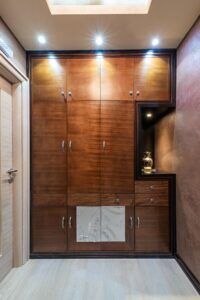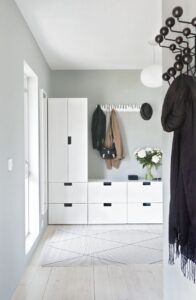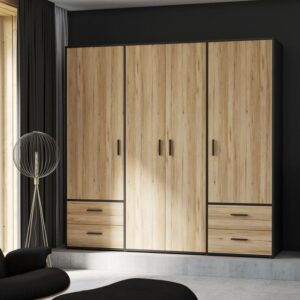Wardrobe Installation can be a daunting task, especially if you are new to the process. But if you follow a few simple guidelines, you can complete the installation yourself and save a lot of time and money. This guide provides a step-by-step guide for a seamless wardrobe installation experience.
1.Planning and Preparation
Before you can install a wardrobe, you need to plan and prep. First, you need to measure the space where you want to put the wardrobe. This will help you figure out the size of the wardrobe you need to buy. Next, you need to choose a wardrobe that fits your needs and the space you have.
There are lots of different types of wardrobes out there, so take some time to research them and find one that works for you. Finally, you need to gather all the tools and materials you’ll need. This includes the wardrobe itself, plus any hardware you might need, like screws, nails, and brackets. Once you’ve got all that, you’re ready for the wardrobe installation.
2.Design and Layout
When you’re designing a wardrobe, you want to make sure you can easily reach everything inside. That means you need to think about the layout of the shelves, hanging space, and drawers. To do this, you’ll need to sketch out a rough design.

An authentic brown mahogany wooden wardrobe –
First, you’ll need to decide on the overall dimensions of the wardrobe. Then, you’ll need to decide on the height of the shelves, the width of the hanging space, and the depth of the drawers. Once you have decided on these dimensions, you can start to sketch out your design.
3. Prepare the Area
Before you can install a wardrobe, you need to get the area ready. Firstly, clear out all the furniture and stuff from the space. Then check the walls to make sure they’re smooth and don’t have any problems like dents, cracks, or holes. If you find any problems with the walls, you’ll need to fix them before the wardrobe installation.
4.Assemble the Wardrobe Frame
When you put together your wardrobe, follow the manufacturer’s instructions. You should use a level to make sure that the frame is square and level. That way, you won’t have problems later when you install the doors and drawers.

5.Install Shelves and Rods
Before you begin, you need to designate the positions for the shelves and hanging rods in accordance with your design. Measure the width of the shelves and hanging rods, and determine the spacing between them.
Transfer these measurements to the wall, using a level to ensure accuracy. Mark the locations of the shelves and hanging rods with a pencil. Next, install the shelves by securing them with brackets and screws. Ensure that the shelves are level and stable. Finally, affix the hanging rods at the desired height.
6.Install Doors
Wardrobe installation with hinged doors, you should firstly attach the hinges to the doors. Secondly, attach the doors to the frame. If the wardrobe has sliding doors, first install the top and bottom tracks. Then, suspend the doors from the tracks. Make sure the doors are level and plumb, and that they open and close smoothly.
7.Finishing touches
Details are really important for giving a room that complete the look. These include adjusting the doors to ensure they open and close smoothly, and adding any additional accessories, such as hooks, baskets, or lighting. These small details can make a significant difference in the overall appearance and ambiance of the room.
8. Final Inspection
When installing a wardrobe, it is important to verify the stability of the wardrobe to ensure that it is securely affixed to the wall as required. This can be done by checking that the wardrobe is level, and that it is secured to the wall with screws or other fasteners.
After installation, it is important to remove all residue and clean the wardrobe inside and out. This will ensure that the wardrobe is safe to use and will last for many years.
Conclusion
Having the right wardrobe Installation guide can not only make your process simpler but more fan and exciting to any DIY enthusiast. Being rhe economy is getting more expensive by the day it is important for most people to jump in the DIY bandwagon to save on any extra costs involved in renovating your home, so get your tools and get down to it.






